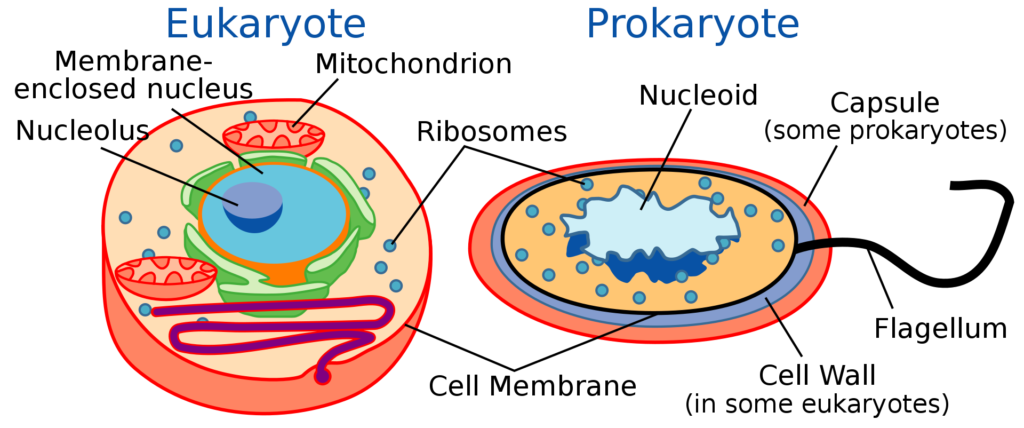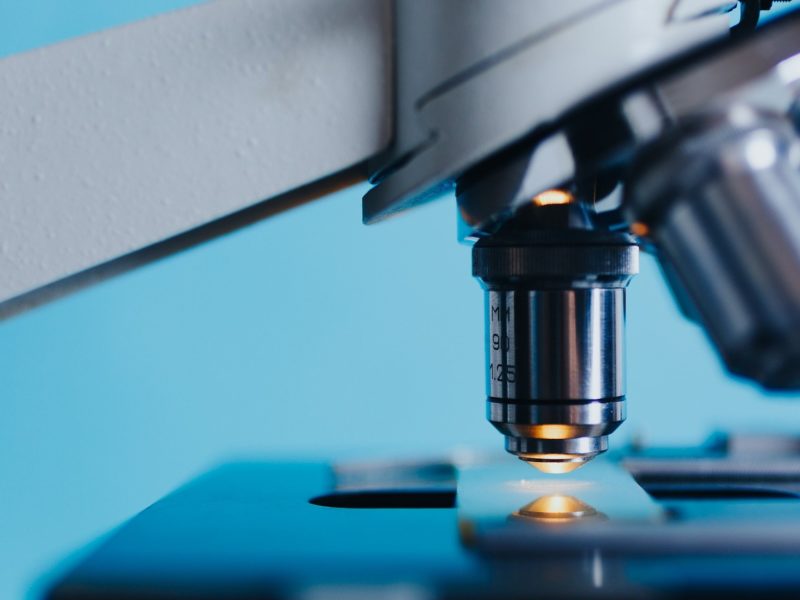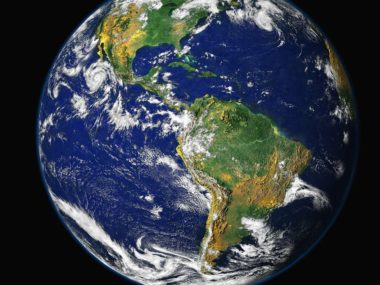Remember dissecting a frog in your 9th grade biology class? When you hear the word “biology” it may bring back those smelly memories. The scope of biology doesn’t stop there, however. Biology literally means the “study of life.” This field of research encompasses how all physical, living things work.1 This research happens at multiple scales. One biologist may look at an organism’s physiology (the functions and processes within a living thing), while another may focus on the interactions between organisms and the environment! Other biologists work hard to develop medications, vaccines, and other therapies to improve human health.
So, what is a “living thing”?
There are varying definitions for something to be physically “alive.” Some helpful distinctions include2:
- Homeostasis–living things can remain stable on their own. Homeostasis is the process of maintaining proper function and balance. Your body, for example, regulates its temperature and chemical reactions in order to survive.
- Organization–living things are well organized, oftentimes possessing several levels of organization. The smallest living level of organization is the cell. Cells make up tissues, and tissues make up organs. When several organs work together, organ systems are formed and allow the whole organism to function properly.
- Growth–living things are able to grow and develop.
- Metabolism–living things use energy from food to perform survival tasks. Energy comes in the form of the molecule adenosine triphosphate (ATP). Your body makes this energy molecule using the food you eat and oxygen you breathe.
- Responding to the environment–living things can react when their environment changes. For example, humans shiver to stay warm when their environment gets too cold. Burrowing animals may hide away in shelters to avoid periods of harsh weather.
- Reproduction–living things contain genetic material (i.e. DNA) to reproduce more of their species.
Let’s compare and contrast a living and non-living thing.
A bacterium needs energy from food to live. It has DNA which allows it to grow and develop all its organized parts. A bacterium can respond to its environment, and it can copy itself and create more bacteria. It is a living thing.
On the other hand, a virus is not considered “alive” because it cannot reproduce on its own, nor does it use food for energy. Viruses do hold genetic material, but they cannot reproduce without a host. Viruses are not living (though they do play an important role in biology, as they rely on and affect living things).
Now that we’ve defined “living”, let’s look at the various facets of biology.
Cellular and Molecular Biology
We’ll start with the smallest parts of the living world: cells!
Cellular and molecular biology are crucial areas of science. They both help explain how living things actually work on a basic level. Cells are the smallest living things. They are made up of varying types of molecules like proteins, carbohydrates, lipids, and water.
Looking at cells in a culture and under microscopes allows scientists to learn about they are built and how they work. You can expect to find a cell biologist working with live cells in petri dishes. Inside, cells are cultured on a nutrient-rich dish. This dish might be kept warm to increase the rate of cell growth. This allows scientists to observe more cells in a smaller amount of time.
We can look at cells in great detail using devices such as light microscopes, or even more precise, scanning electron microscopes. Microscopes allow scientists to look at structures within the cell at great magnification.
Understanding how a cell’s molecules work together takes rigorous lab work, time, and dedication. A cell biologist may use special dyes to stain molecules within a cell. Other times, they may work with radioactive materials and X-rays. These techniques allow biologists to identify the presence of proteins or other molecules in a tiny cell by targeting them specifically. The scientists can then research the functions and purposes behind those specific molecules.
Why does cell biology matter?
Why is there so much dedication to understanding tiny, microscopic organisms? One reason is to progress in the field of medicine. Cancer research would not improve without the ability to study cells in vitro, or in a petri dish. Treating infections or understanding viruses would also not be possible without the study of cells. For example, vaccines are developed to train cells to recognize and attack their microbial opponents!
Is cell biology important for your everyday life? If you wipe down counters with bleach, wash your hands after cracking raw eggs, or store your food in a refrigerator, you are interacting with cell biology! Each of these habits has to do with controlling the spread of unwanted microbes all around us. Eggshells containing the bacterium Salmonella may cause food poisoning (though you will still catch me eating raw cookie dough). Food may grow mold if left out for too long, but the cool temperature of your refrigerator can slow that process! Each of these instances relates directly to cell biology.

Organismic Biology
Another realm of biology is the study of entire organisms. Looking at the world around us, it is easy to see much diversity and disparity between the creatures that make up ecosystems. Taxonomy classifies all living things into groups based on similarities. Kingdoms comprise the largest, most broad group (e.g. Kingdom Animalia). Species is the smallest, narrowest group (e.g. Homo sapiens).
One of my favorite parts of biology class was dissecting various kinds of animals. Comparing the similarities between unrelated animals reminds us how God is the Master Designer. On the flip side, contrasting the different designs in animals shows God’s creativity and wisdom beyond our own imaginations.
A Brief Overview of Six Kingdoms of Life
Kingdom Animalia includes organisms which are made of many eukaryotic cells (cells with a nucleus; see the figure below). Animals eat food to make energy. They can move, often via a muscular system.3
Kingdom Plantae is made up of organisms which also have multiple, eukaryotic cells. Plants, unlike animals, can use sunlight, water, and gasses to make their own food! This happens during photosynthesis. Plants do not move like animals do.4
Kingdom Fungi includes both single-celled and multicellular organisms. Fungi can’t make their own food like plants, so they get it from other sources. Fungi often break down other organisms in nature as decomposers.5

Kingdom Protista encompasses organisms such as mold, algae, and protozoa. These eukaryotes are usually single-celled.
Kingdom Eubacteria —can you guess who makes up this group? Bacteria are single-celled, prokaryotes (cells without a nucleus). You may only know bacteria from the illnesses or infections they may cause. Some bacteria names such as E. coli or Staphylococcus might ring a bell. They may sound scary, but bacteria are not always harmful to humans. In fact, some strains are vital for human health! Your gut contains millions of small microbes that help you digest food. This is why many people are told by their doctor to take a probiotic to support their gut health.
Ecology
Moving past the basics of organisms, we can look at how they interact with each other and their environments. This is the field of ecology.
A species that lives in one area makes up a population. When several populations of different species live together, they make a community. Many communities together make up ecosystems.
Ecology is more than just what an animal eats and where it lives, though these are key factors. A fascinating part of ecology is the impact a species can have upon the entire food chain. Ecosystems are delicate works of art. One change may spark a long reaction along the food chain. We call this a trophic cascade.6 Ecological studies help us to know the effects of humans. This includes hunting, building, and gathering natural resources.7
Evolutionary Biology
The field of evolutionary biology aims to understand the changes and origins of organisms. Biologists in this discipline usually study nature from the framework of evolution from universal, common descent. Studies on evolution often revolve around creating phylogenetic trees. These trees are similar to a family tree in that they show relationships. However, they do not show connections between siblings and grandparents like a family tree. Phylogenetic trees reflect relationships between species.
As biblical creationists, it is important to note the foundational thinking behind evolutionary studies. As we read scientific articles, we must discern which conclusions are applicable within the biblical framework of origins and which are not. Biblical creationism does not hold to the idea of universal common descent. Rather, God created many kinds of living things during creation week. Therefore, the kinds are inherently unrelated.
There is certainly a need for biblical thinking when it comes to origins. However, evolutionary biology still provides important data about how living things change. This is especially true for how groups of organisms change on small, observable scales. We often refer to smaller scale changes within a population as microevolution. Microevolution refers to “change in gene frequency within a population”. In other words, as genes change from one generation to the next, whole populations of a species may have different traits. An organism’s environment often leads to microevolution through a process called selection. Changes can also occur due to mutations.8 These observable cases of microevolution are very useful in understanding the world God has made.
Creationism and Biology
What do all these disciplines have to do with creationism?
As we looked at before, each of these fields of study point to the detailed design that God has woven into His creation. From the smallest unit of life, the cell, to interactions between organisms and their environments, there is balance. If a change happens in the environment, we may see sensitive responses in the organisms. It is hard to imagine how a world so delicate could randomly come about by chance. How could the levels of organization evolve so well to work together? How could an ecosystem ever be built slowly over time when there is clearly a strong reliance between species?
It isn’t all so simple for creationism, however. There are many challenges we still face. For example, how did species diversify so quickly after the Flood? How do we think about predator in a pre-Fall world when we know that death entered the world after sin? Were predators, such as lions or wolves, designed to kill before the Fall? These are just a few questions to which creationists seek answers. Though there are challenges, we are learning so much through research and biblical studies.
Science and Biblical Principles
Creationists do not need to deny all forms of change in biology. Microevolutionary changes are observable within species from one generation to the next. To claim that organisms do not change would not be a true, scientific statement. It is clear that animals can adapt to their environments. They can diversify into new species and subspecies. Observing changes within a species yields important information about genetics and ecology. Further, creationists should care deeply about the impact humans have on the world. Data on human effects on the environment should be used to improve our efforts in conservation and stewardship.
Additionally, we have learned much about cellular biology and genetics by facing challenges head on. Human Chromosome 2, for example, is typically believed to be an artifact of human evolution from non-human primates. Creationists, however, disagree with the foundation of this claim. Genesis is clear that God created man in His image, separately from all animals. This has led to creationist research on the topic resulting in varying opinions and explanations. Regardless of debate, the challenges have led to further confidence that God has made all things with purpose and design.9
Conclusion
Biology is a very broad topic, with focuses ranging from molecules to whole ecosystems. By studying the world, we can see how God created living things with beautiful design, intricacy, and purpose. It is important as creationists to regard real science and take part in creation stewardship.
Footnotes
- Wise, K. P. 2018. Devotional Biology. Compass Classroom. ↩︎
- Khan Academy. Are Viruses Dead or Alive? https://www.khanacademy.org/test-prep/mcat/cells/viruses/a/are-viruses-dead-or-alive ↩︎
- https://www.britannica.com/animal/animal ↩︎
- https://www.britannica.com/plant/plant/Definition-of-the-kingdom ↩︎
- Oxford Dictionary. https://web.archive.org/web/20120728023308/http://oxforddictionaries.com/definition/english/fungus ↩︎
- Farquhar, Brodie. 2021. Wolf Reintroduction Changes Ecosystem in Yellowstone. https://www.yellowstonepark.com/things-to-do/wildlife/wolf-reintroduction-changes-ecosystem/ ↩︎
- Wolf Restoration. https://www.nps.gov/yell/learn/nature/wolf-restoration.htm ↩︎
- What is Microevolution? https://evolution.berkeley.edu/evolibrary/article/_0_0/evoscales_02 ↩︎
- Tomkins, J.P. 2018. Combinatorial genomic data refute the human chromosome 2 evolutionary fusion and build a model of functional design for interstitial telomeric repeats. In Proceedings of the Eighth International Conference on Creationism, ed. J.H. Whitmore, pp. 222–228. Pittsburgh, Pennsylvania: Creation Science Fellowship. ↩︎











